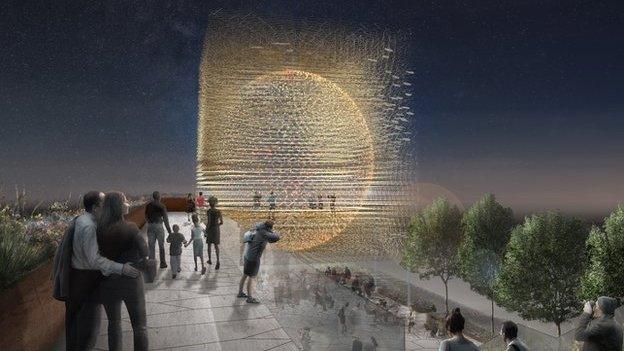Wolfgang Buttress' The Hive to give visitors 'bee insight'
- Published
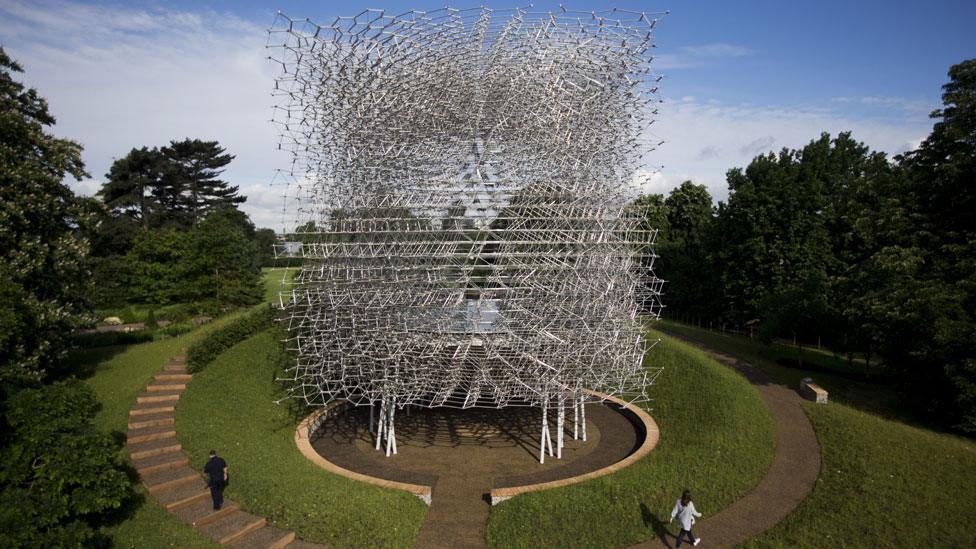
The Hive is composed of nearly 170,000 pieces of aluminium
A giant aluminium beehive that uses real bee activity to give visitors an "experiential insight" into the life of a colony has been installed in the Royal Botanic Gardens at Kew.
The Hive, a 55ft (17m) high and 40-tonne work that incorporates lights and music, was originally created for the 2015 Milan Expo.
The lattice installation, which is made up of 170,000 parts, was designed by Nottingham artist Wolfgang Buttress.
It opens to the public on Saturday.
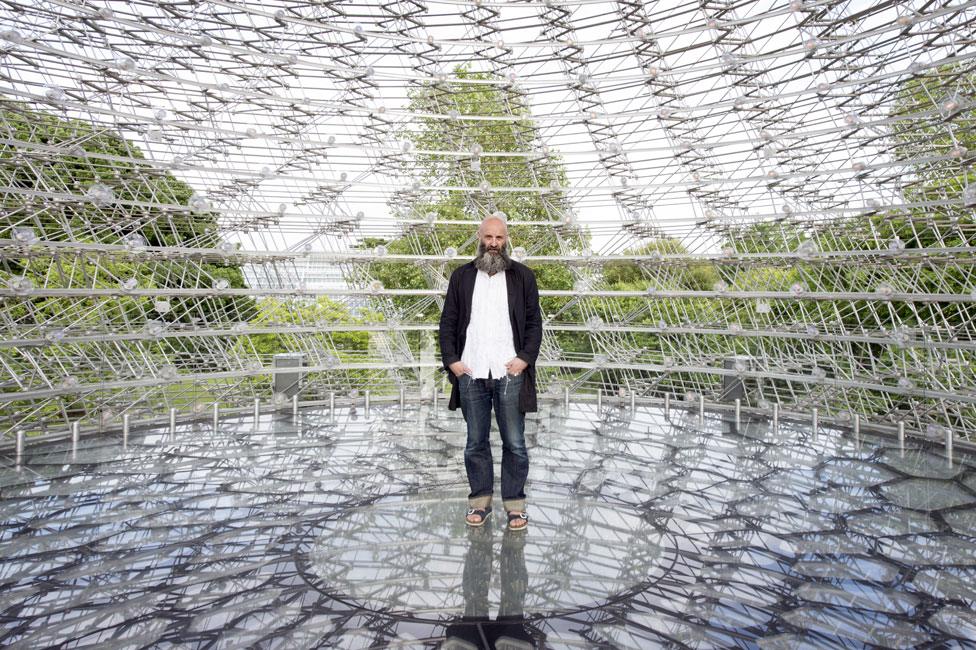
The installation is Wolfgang Buttress's largest to date
The designer said the piece was "a multi-sensory experience that integrates art, science and landscape architecture".
A Kew spokesman said the work was "inspired by scientific research into the health of honeybees and has become a visual symbol of the challenges facing bees today".
Buttress's daughter Camille worked with the bands Spiritualized and Amiina and sounds from nature, such as queen bees buzzing and ducks quacking, to create a soundscape for the installation, while the light and sound intensity is controlled by instruments measuring the activity of bees in one of Kew's real hives.
The work will stand in the London gardens until the end of 2017.
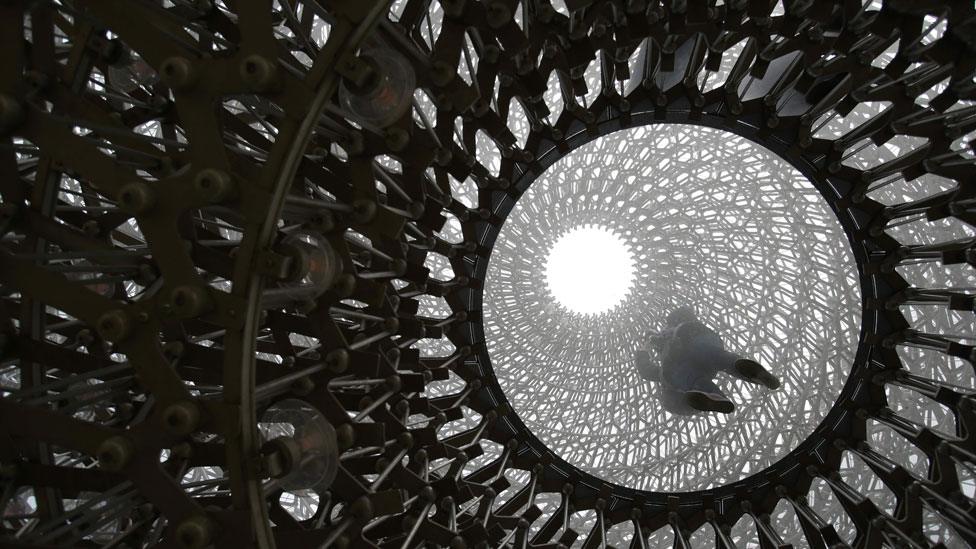
The work contains a globe-shaped hollow with a glass platform for visitors to stand on
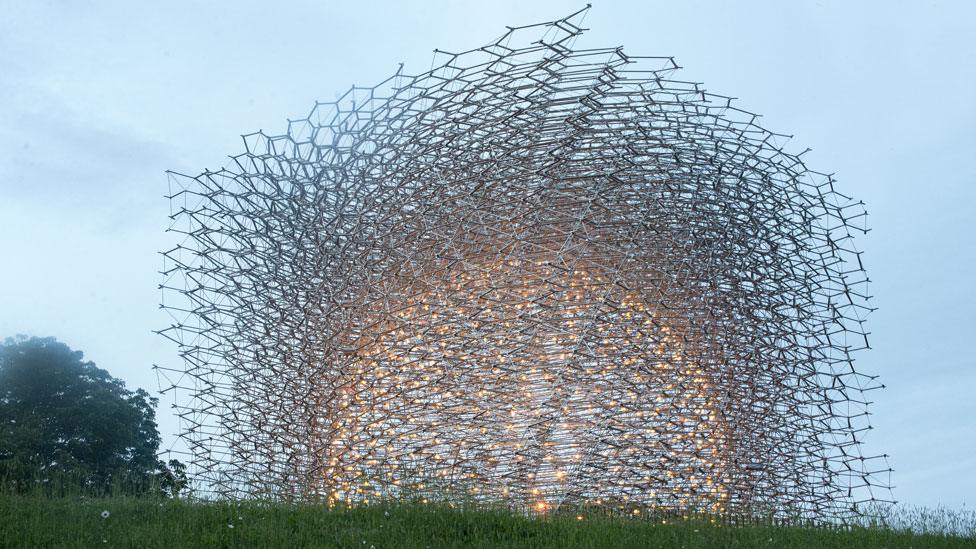
The Hive won an award for best pavilion architecture at the Milan Expo
- Published16 July 2015

- Published25 May 2014
